Heritage
Sri Lanka contains an astonishing seven UNESCO World Heritage Sites. Six cultural sites are testament to a civilization with over 2,000 years of recorded history, while a seventh natural site boasts some of the highest biodiversity found outside the Amazon basin.
From colossal ancient monuments and serene rock carvings in sprawling ruined cities, to a 5th c. AD king’s palace in the clouds, the World Heritage Sites showcase the island’s rich history and contribution to civilization. The largest and most archeologically dramatic are located in the UNESCO-designated Cultural Triangle, the area formed by linking the ancient capitals of Anuradhapura, Polonnaruwa and Kandy. It’s a living heritage, where the visitor will see Buddhist monks and reverent devotees and hear the hypnotic murmur of religious invocations – all of which bring the brick temples, granite statues and towering dagobas of Sri Lanka’s ancient cities to life.
Through the heritage sites the visitor can relive some of the seminal episodes in the island’s past – the introduction of Buddhism, which inspired kings to undertake astounding feats of engineering; the complex palace intrigues; the repeated invasions and conquests; and ultimately, the capitulation to the European colonial powers.
Experiencing Sri Lanka’s heritage sites takes you on a spiritual journey that will uplift and amaze, inspire and refresh. The island’s compact dimensions mean that it is possible to combine a visit to several of these marvels in the Cultural Triangle during even the briefest of visits.
Sacred City of Anuradhapura
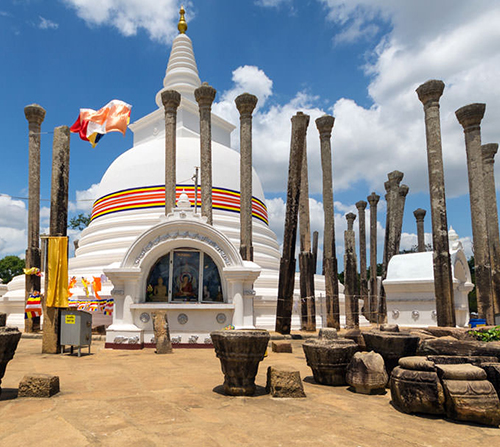
Located in the North Central Province, 206km from Colombo, the Sacred City of Anuradhapura is a magical place. Featuring some of the most ancient archaeological treasures in Sri Lanka, this vast heritage site is an impressive reminder of an ancient civilization.
Once one of the grandest monastic cities the world has ever seen, it was established in the 4th century BC, rising to prominence with the arrival of Buddhism, a pivotal event that saw the city transformed into a major centre of Buddhist pilgrimage and learning.
The great kings of Anuradhapura oversaw a golden age in the island’s history, building colossal dagobas that rivalled the pyramids of Egypt in scale. The city’s fame spread afar and features in writings from ancient Greece, Rome and China. But after enduring frequent invasions from South India, Anuradhapura eventually fell into decline in the 10th c. AD.
You feel overwhelmed at the scale of ancient Anuradhapura. At the centre of the ancient city is the Mahavihara, the oldest of the city’s monasteries. Worshippers still come to meditate here, drawn to the Sri Maha Bodhi, grown from the original tree under which the Buddha attained enlightenment in Northern India. The Thuparama dagoba, erected in the 3rd c. BC, was the first Dagoba to be built in Sri Lanka and enshrines the Buddha’s right collarbone. Standing before the red-brick Jetavana Dagoba – once the third tallest structure in the world – is an awesome experience. The Abhayagiri Dagoba is still covered in earth and vegetation, while the more famous Ruvanvalisaya Dagoba, fully restored, is beautifully illuminated at night. The magnificentKuttamPokuna or “twin baths” with their stone steps are well preserved but all that remains of the Brazen Palace – once a nine-storey structure with 1,000 rooms – is 1,600 granite columns. The Isurumuniya rocktemple houses a famous 5th c AD Indian-style sculpture known as the lovers.
Anuradhapura is nestled between three vast reservoirs known as tanks – the Basawakkulama, the Tissa Wewa and the Nuwara Wewa. Part of a sophisticated irrigation system developed from the 4th c. BC onwards, these still carry life-giving water to the fields in the dry zone, living testament to the engineering skills of the ancient rulers. The raised bunds of the tanks are perfect for an evening stroll and some bird-watching, while also offering great views of the city’s dagobas.
Medieval Capital of Polonnaruwa
In the 12th c. AD, the medieval capital of Polonnaruwa was one of the great urban centres in South Asia. Today, the well preserved ruins give you the chance to experience the grandeur of this period and marvel at the artistry of the island’s early craftsmen.
Located 142km from Colombo, Polonnaruwa was the island’s second ancient capital. Many of the existing ruins owe their construction to Parakramabahu the Great, the last in a sequence of warrior-kings, who developed the city on a lavish scale. He is also credited with the massive artificial lake that lies to the west of the city, the Sea of Parakrama.
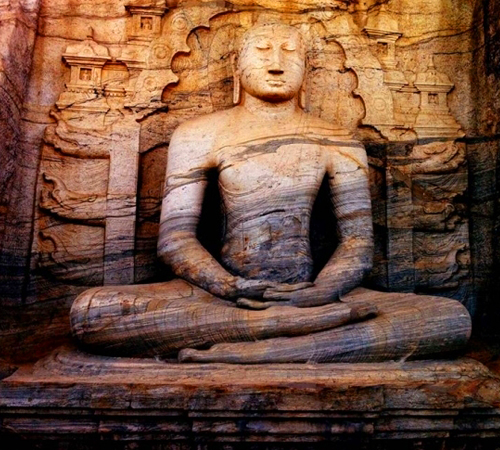
At the heart of the ancient city are the remains of the Royal Palace and Council Chamber. Nearby is the vatadage or relic house, a beautifully decorated circular structure with an uncanny resemblance to Stonehenge. Among the other sites are the gal pota(stone book) – a 9m-long granite slab inscribed with the feats of a king – the Lankatilaka shrine and the supremely graceful Buddha statues at Gal Vihara, the pinnacle of Sri Lankan rock carving. The site also hosts many distinctly South Indian-style Hindu temples.
Polonnaruwa’s ancient splendor cannot fail to inspire. Set amongst gently undulating woodland, the monkeys, giant lizards and birdlife in abundance seem tamer than elsewhere in the island. Even 1980’s pop group Duran Duran were obviously impressed, featuring Polonnaruwa in their music video, Save a Prayer.
Cave Temples of Dambulla
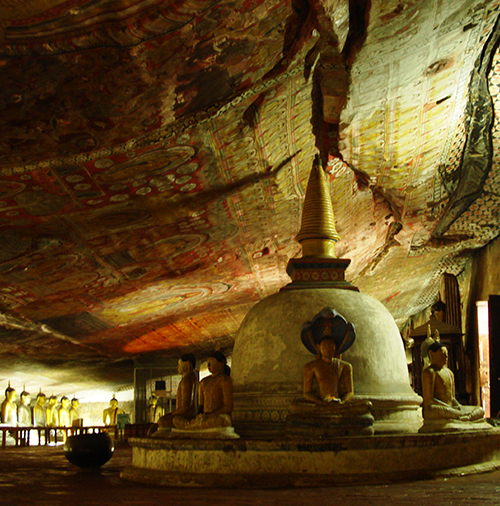
Hewninto a 160m granite outcrop are the remarkable cave temples of Dambulla. Located at the centre of the island, 148km from Colombo, and on the main route north to Anuradhapura and Polonnaruwa, the cave temples are masterpieces of Buddhist art. Each is filled with murals depicting scenes from the Buddha’s life, and glided statues of the Buddha in various poses.
In the 1st c. BC, the caves provided refuge to a king who fled a South Indian invasion. On reclaiming his throne, the grateful king had temples constructed in the caves that had sheltered him. These were embellished by subsequent rulers, especially during the Kandyan period in the 17th and 18th centuries.
Altogether, there are five caves, Cave 2, the Maharaja Vihara is the largest and most spectacular at over 50m long, 7m high and almost 25m deep. The spiritual energy at Dambulla is palpable and the Buddhist art on display is unparalleled in Sri Lanka. An added bonus is the majestic view from the top of the rock.
Sigiriya
Part hedonistic pleasure palace, part fortress and part sacred complex, Sigiriya is one of the island’s most awe-inspiring archaeological sites and a leading tourist attraction. In fact some consider it to be one of the oldest tourist attractions in the world with early visitors recording their impressions as graffiti on a wall described as the world’s first interactive book. Located north of Dambulla, 169km from Colombo, the site consists of a sheer rock that rises over 200m with the ruins of a palace on the top and a vast pleasure garden complex at the foot.

For just two decades in the 5th c. AD, Sigiriya rose to prominence following a power struggle between two brothers, and an act of patricide that saw the then king walled-up alive by his son, Kasyapa. Fearful that his defeated brother would return from exile to extract vengeance, Kasyapa shifted the capital to Sigiriya.
The megalomaniac yet spiritual Kasyapa clearly had an eye for beauty. The pleasure gardens include a series of symmetric pools, channels and fountains that still spurt water after 1,500 years. Partway up the rock are the famous Sigiriya frescoes, featuring 21 bare-breasted damsels that may represent celestial nymphs, but were surely modeled on Kasyapa’s own consorts. Halfway you’ll encounter a pair of giant lion’s paws, part of the original entrance, which required visitors to pass through the open mouth of a lion. The summit yields a dramatic vista of the surrounding jungle and contains the foundations of the palace complex, replete with bathing pool. But all this was to be in vain.
Kasyapa descended from his palace in the clouds to face his brother astride an elephant, eventually taking his own life when facing certain defeat.
Royal City of Kandy

Nestled amidst lush mountains in the north of the island’s hill country, the Royal City of Kandy, 116km from Colombo, was home to Sri Lanka’s last independent kingdom, surviving two centuries of colonial incursions by the Portuguese and the Dutch before falling to the British in 1815. The legacy of this proud tradition lives on today in the form of the city’s distinctive architecture, art and dance.
Home to the sacred relic of the tooth of the Buddha, a visit to the Dalada Maligawa or Temple of the Tooth, is an experience no tourist should miss. Said to have been snatched from the Buddha’s funeral pyre and smuggled to Sri Lanka in the hair of a princess, the tooth relic is of great spiritual significance. Each year in July or August is the Esala Perahera (perahera means “procession”), a spectacular display of medieval pageantry that includes caparisoned elephants, fire dancers and Kandyan drummers.
Stroll around the beautiful lake, the centerpiece of the town and explore the numerous temples perched on the hills – these are pleasant ways to spend your time in Kandy. Experiencing the pulsating drum rhythms and colourful traditional dances at a cultural show is another must, as is a ramble through the Royal Botanical Gardens at Peradeniya, 6km south of the city. Kandy is also the best place in Sri Lanka to study meditation.
Dutch Fort at Galle
The 17th c. Dutch Fort at Galle, close to the island’s southernmost point 173km from Colombo, has the distinction of being the best-preserved sea fort in South Asia. Enter through the imposing stone bastions that encircle the sea-facing promontory and step back in time. Inside the Fort you will find that it exudes old-world charm. The narrow streets are dotted with Dutch colonial villas and there’s a welcome absence of vehicular traffic. There are several museums and antique shops that display curiosities from the island’s colonial era. Of the many colonial buildings, perhaps the most absorbing is the Dutch Reformed Church, containing ornately carved memories to the city’s Dutch settlers. The Fort also hosts some of the island’s most exclusive boutique-style accommodation in former villas restored to their colonial glory.
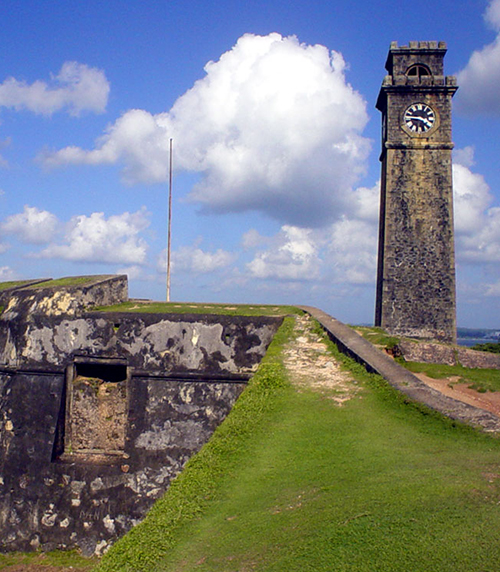
The Portuguese established the first fort in Galle. This was captured by the Dutch in 1640, after which the fortifications were expanded and the grid street system established. Further extensions were made during the British period. The passenger port gained importance, but with the construction of a breakwater at Colombo, Galle slipped into maritime decline.
Stroll along the massive ramparts at dusk. Experience the tranquil ambience of a bygone era yet see life as it proceeds: children flying kites, games of softball cricket, and couples canoodling behind the privacy of umbrellas. They all seem to enhance the magic of the Fort.
Sinharaja Forest Reserve
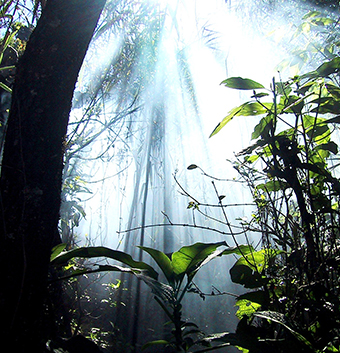
Damp, mysterious and teeming with life, the Sinharaja Forest Reserve, situated 120km south-east of Colombo, is the last extensive stretch of virgin rainforest on the island. At just over 11,000 hectares, lying across the wet zone at the southern edge of the hill country, Sinharaja is an ecological treasure trove. Its staggering array of flora and fauna place it among the top biodiversity hotspots in the world.
Over 130 bird species are found here including many of the 33 species endemic to Sri Lanka. There is also a rich reptile population and myriads of insect species, many yet to be classified. Mammals seen here include the purple faced langur monkey and the giant squirrel. Sinharaja is also home to the elusive leopard.
It is preferable to explore Sinharaja on foot, which makes for a truly authentic jungle experience. Starting points for visits are Deniyaya to the east or Kudawa to the north.


